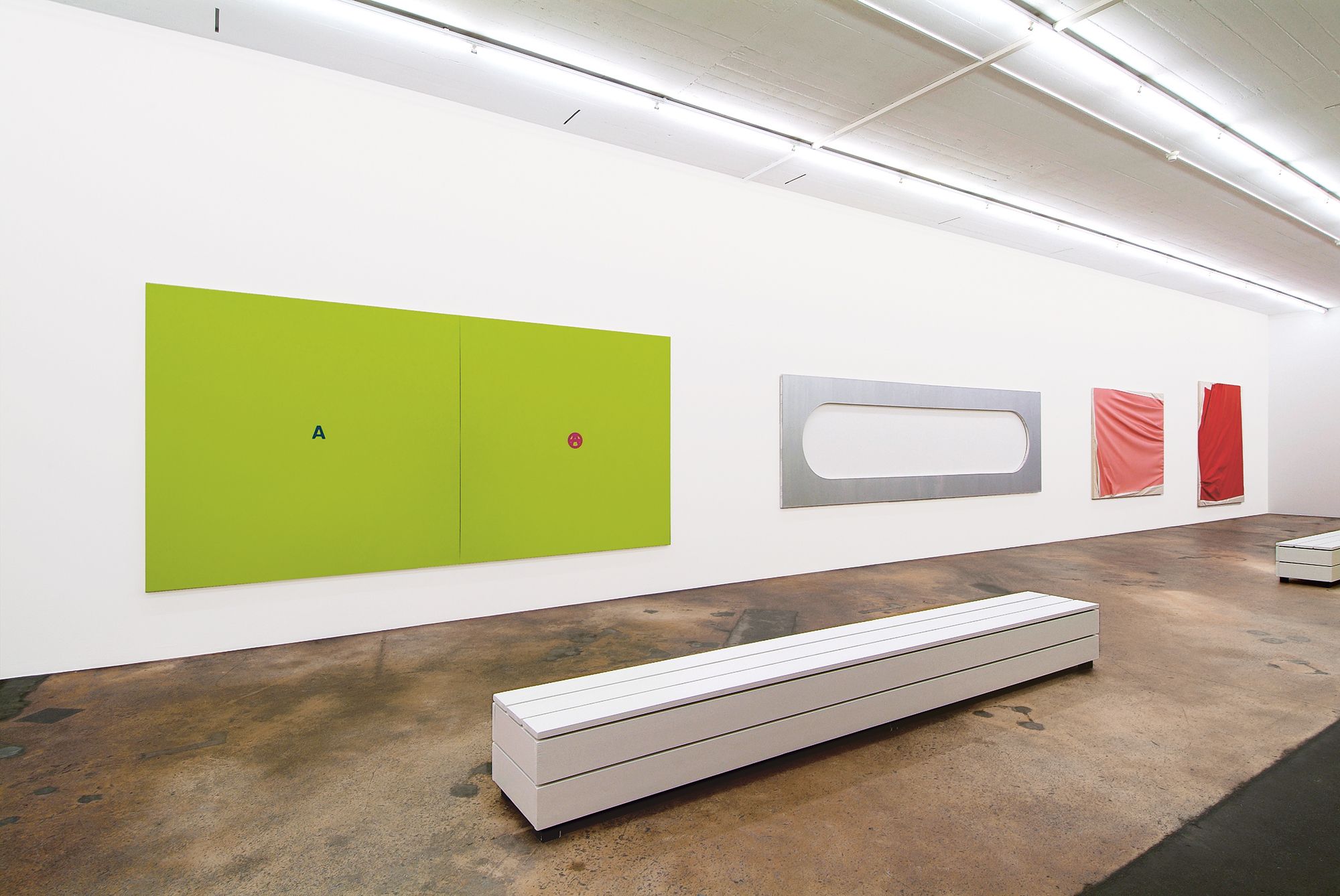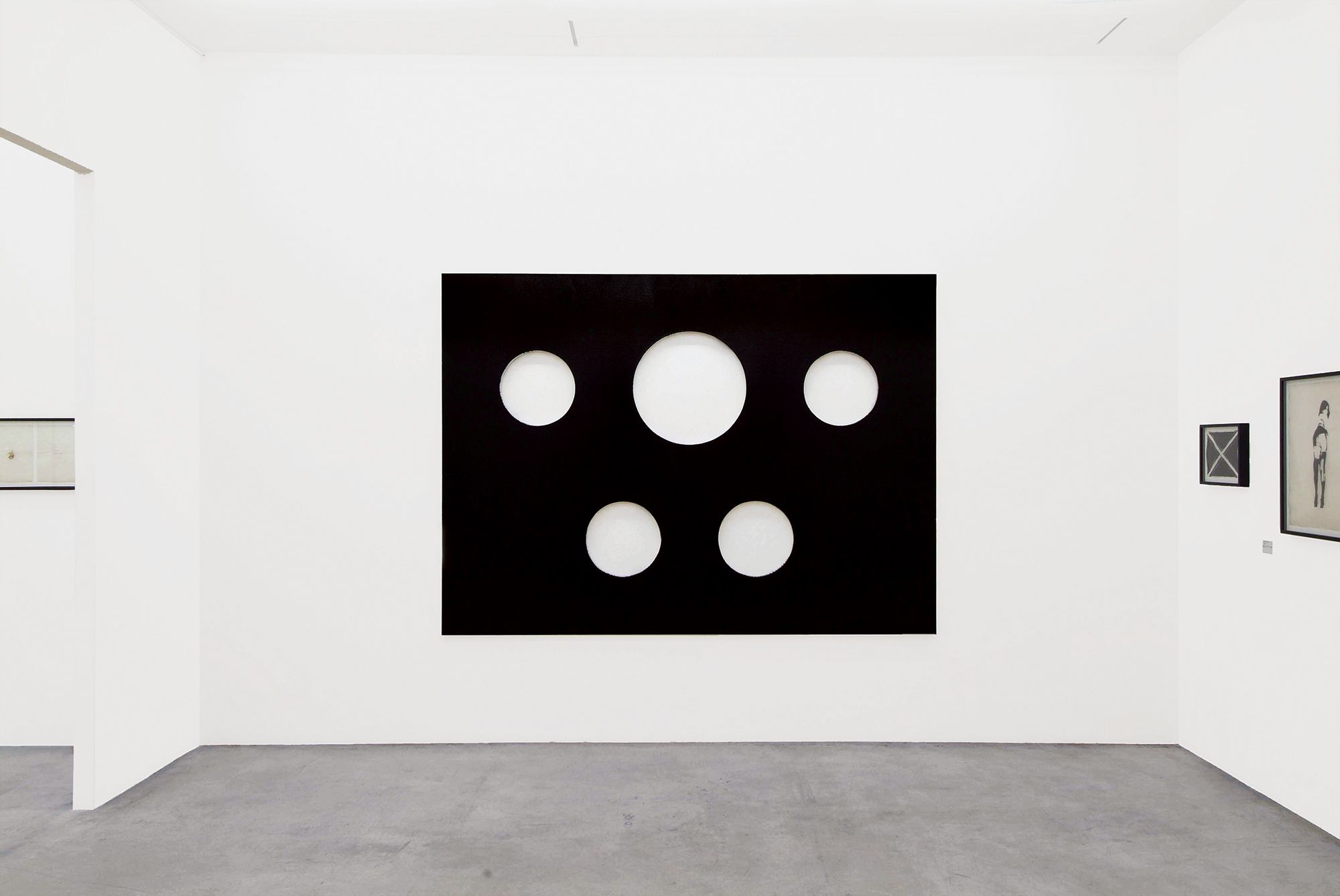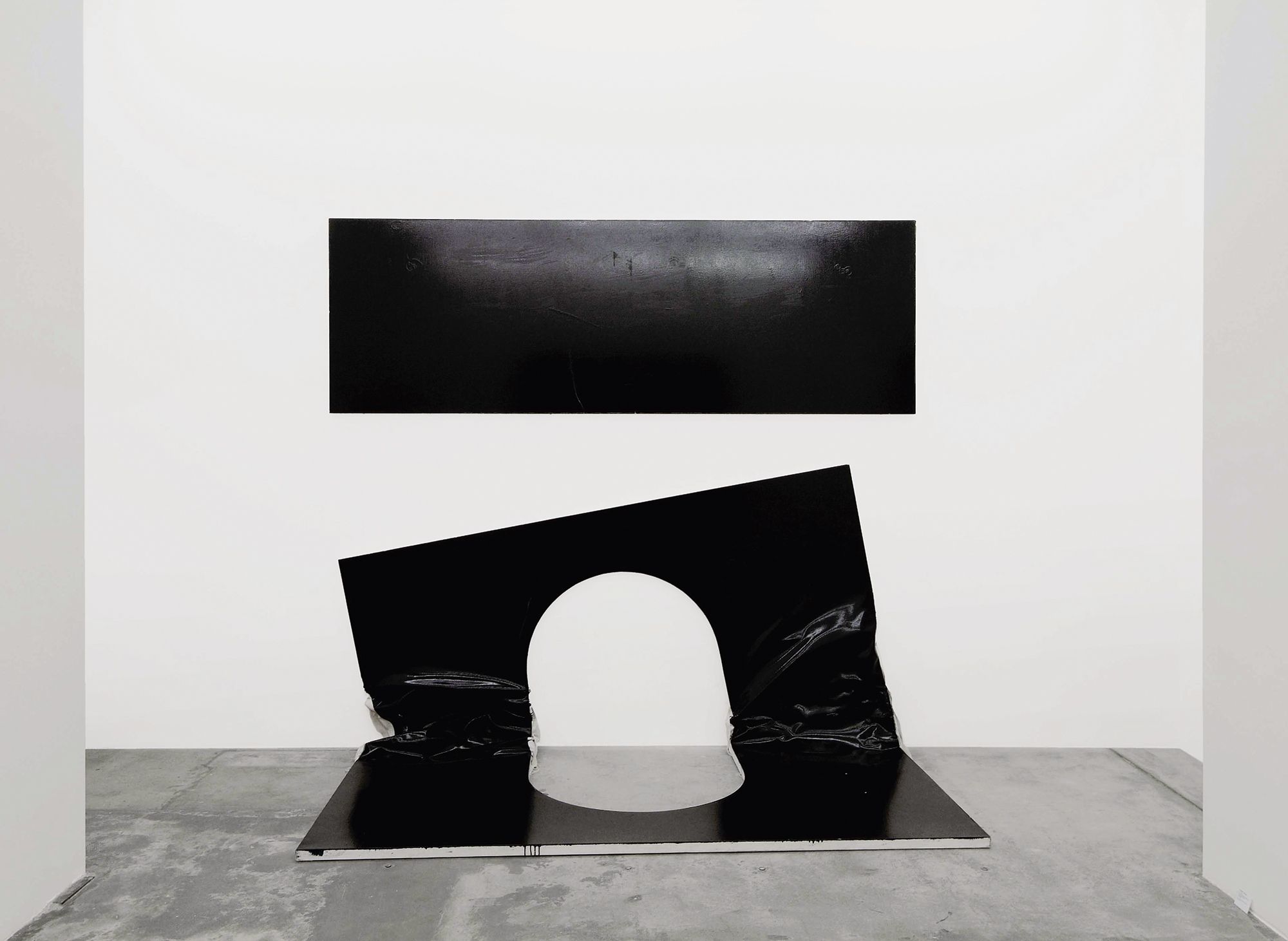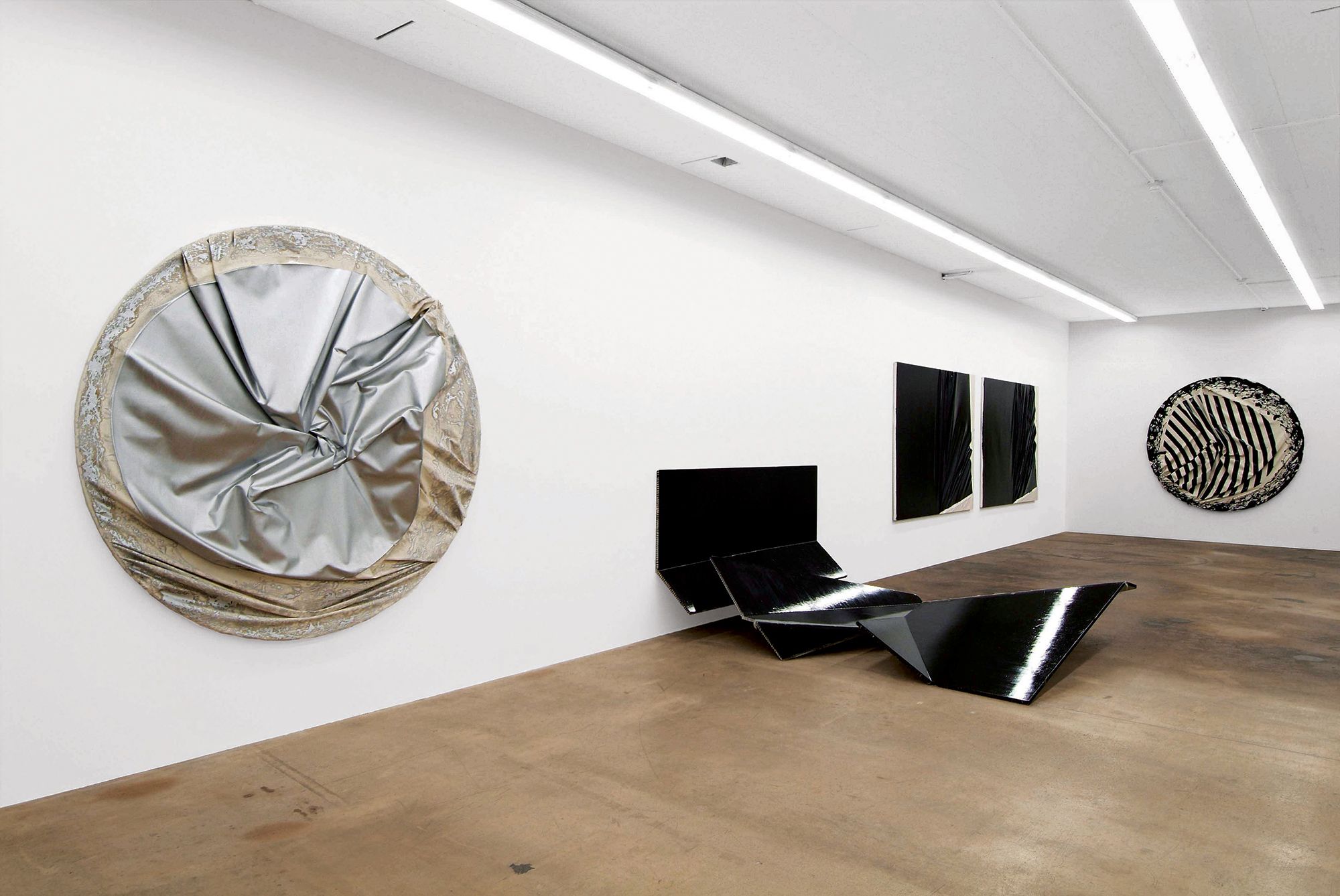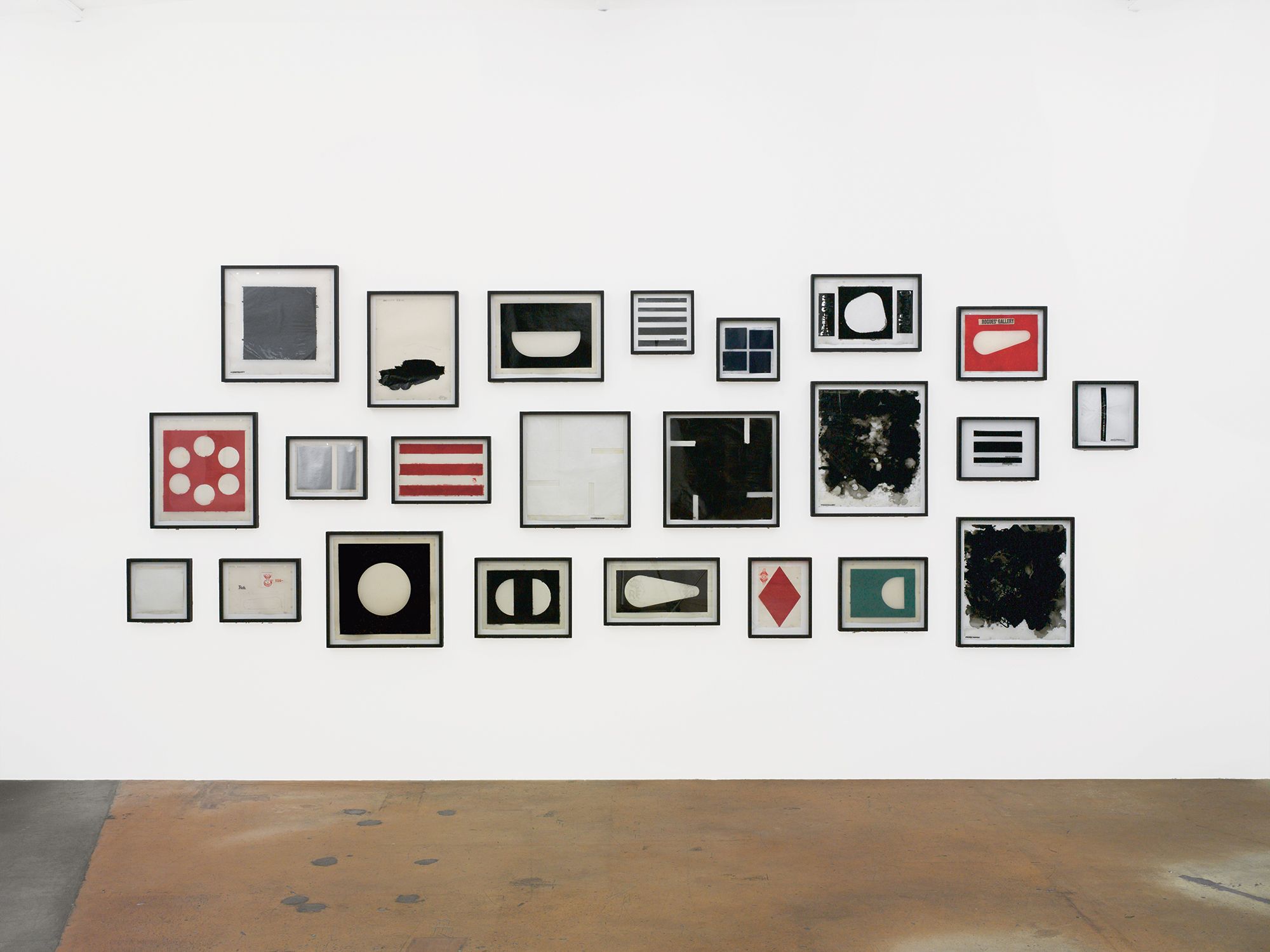The retrospective of Steven Parrino (1958–2005) filled nearly twenty rooms on the second and third floors and contained over 170 works, including paintings, drawings, and films. Back in the early 1980s, when the word on the street was that painting was dead, rather than join the flock of mourners Parrino took a shot at necrophilia. In his hands, Appropriationist strategies became a means to incarnate the historical breakdown of avant-garde narratives. Neither nostalgic nor cynical, his “misshapen” monochrome paintings, performance-based films, photo-
collages, and works on paper made with such loaded materials as engine enamel, blood, and glitter, owe much to Frank Stella’s Black Paintings’ “what you see is what you see” credo, as well as the silver of Warhol’s Disaster Paintings (1963), which can be glimpsed in Parrino’s large crumpled canvases suggesting the crumpled body of a car after an accident. His “figurative” designs appropriate images from the biker, no-wave, and punk subcultures, from comic books and tabloid headlines; they are “a clear sign of violence being served cold” (Robert Nickas). Unlike the art of his Californian contemporaries such as Mike Kelley, Jim Shaw, and Raymond Pettibon, Parrino’s works do not so much reveal America’s subconscious drives and myths as they embrace its endlessly plastic surface—
willingly silly non-sites, glitz, and glamour, without any hint of counter-culture ideals.
- Fabrice Stroun curated the exhibition, a different version of which was shown at the Palais de Tokyo, Paris
